|
Jinan
Zoo
December
8, 2014
Goal
One
day visit to see chimpanzee facility and to give
presentations.
Chimpanzees
The
park received
four young chimpanzees in July 2010.
  
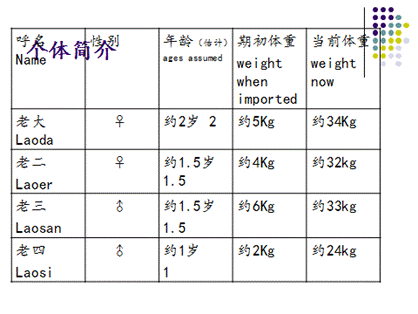 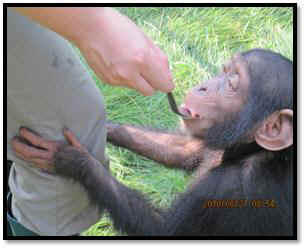
Current
pictures of the chimpanzees.
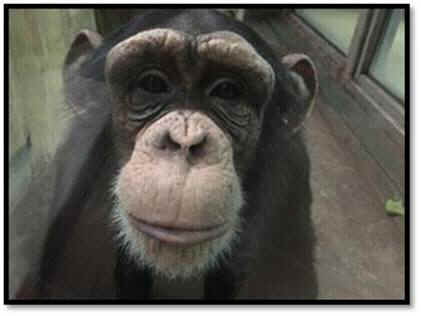 
| Laosan
(M, 7 year old) |
Laosi
(M, 6 year old) |
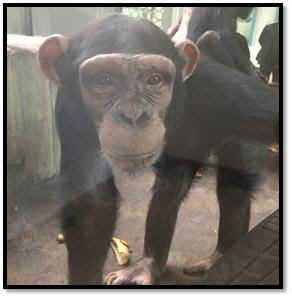 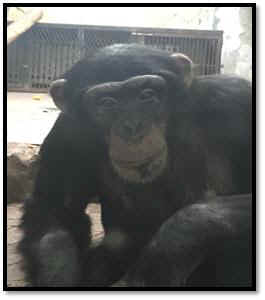
| Laoer
(F, 7 year old) |
Laoda
(F, 7 year old) |
The
facility was found sufficiently large and furnished both
inside and outside.
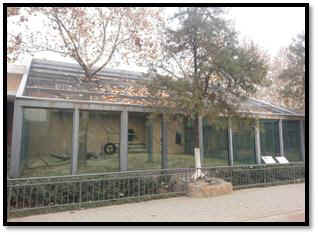 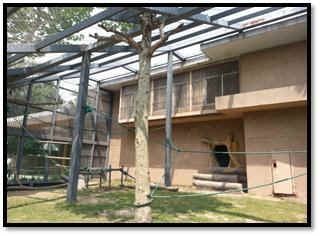
The
night houses had both flexible and inflexible furniture, but
they lacked substrate.
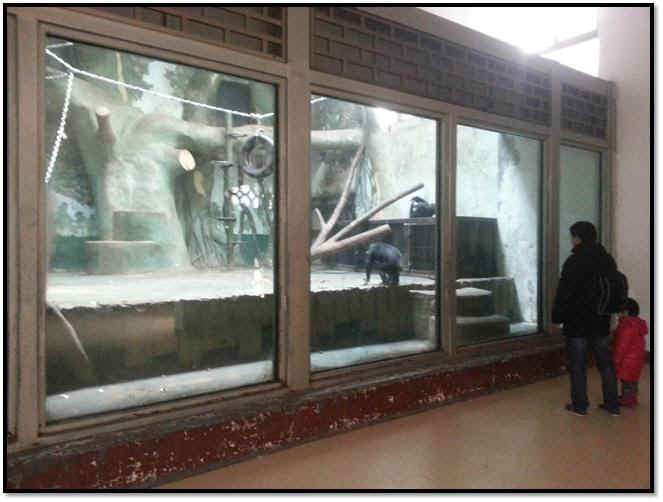
Suggestions:
Begin keeping animals off of unyielding surfaces (brick,
concrete, etc.). The use of appropriate substrate (inside-
paper products, hay or straw, etc.; outside- nonflammable
materials such as grass, sand, soil, mulch, fresh browse,
etc.) will make a significant difference not only in the
animals’ mental and physical health, but also in the
improvement of the exhibit aesthetics. Using substrate will
reduce cleaning time and water consumption, as well.
Soaking, scrubbing and hosing dry waste takes much longer
than spot cleaning substrate due to the substrate’s
ability to absorb urine and cover fecal matter. Reducing
hosing and partially covering surface with substrate will
overcome any of these obstacles and provide animals with a
soft surface. In China, paper products are toxic, but
pet-safe; eco-friendly products (bags, wrapping papers,
boxes, burlap bags, etc.) are available online. Please
review samples:
Winter Care
Chimpanzees
can be allowed outside for limited time during the
winter; however, they need to have access to inside heat
and provided with extra blankets. Some institutions keep
to a temperature guideline and will only let their
chimpanzees out if the temperature reaches 10-13 C,
while others, such as Chimpanzee Sanctuary Northwest,
USA, allow the chimpanzees to make their own decision.
It is important to remember to provide chimpanzees the
opportunity to seek warmth if allowed outdoor access
during cold weather, and there might be a temperature so
low that outdoor access is inappropriate.
The only time they don't allow them outside is when
heavy, wet snow reduces the voltage on their electric
fence.
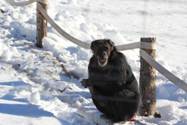 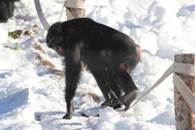 
csnw chimpanzee snow
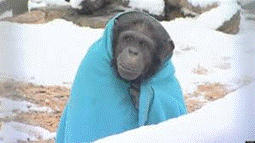
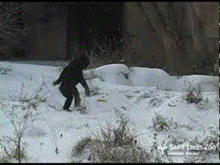
Wales
Ape and Monkey Sanctuary, U.K.
Saint Louis
Zoo, USA
See-through
curtains made from heavy-duty plastic strips can be hung
inside the night houses to keep the animals warm.
Management must take
into consideration the type of enclosure, the animals’
behavior and characteristics, the materials used, if it
would prevent the animals from exiting or entering the
enclosure, etc.
Suggestions:
The method used by the Chester Zoo, England is simple. Strips
of thick, clear ARCO PVC is cut to the length of the
slide and the holes are drilled in the PVC. A
strong, thick metal plate, which has the same amount of
holes drilled in it, is lined up and bolted onto the
wall. This makes it a lot easier to take off and
replace the broken or torn PVC strips.
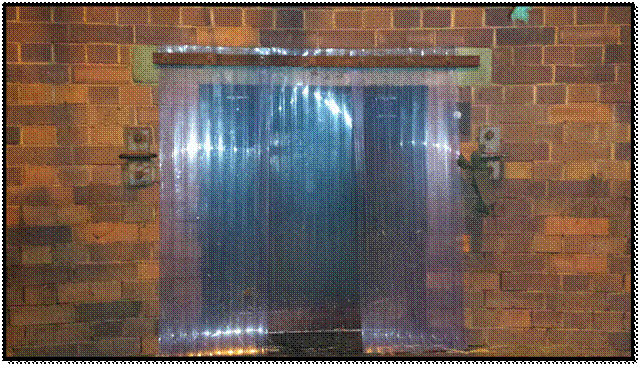
Jinan
Zoo has a good enrichment and training program. Staff
understands the need of infants developing proper motor
skills and the exhibits have adequate furniture.
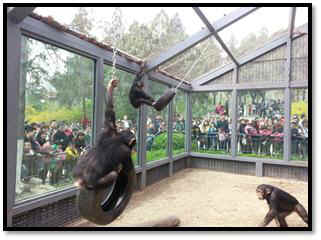 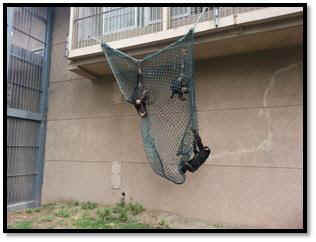
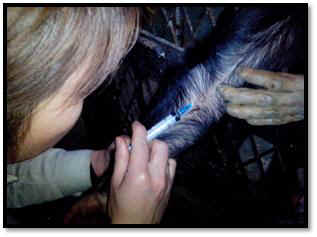 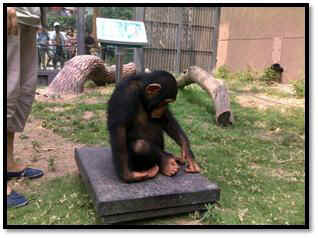
Socializing
Staff
are trying to socialize the infants with humans as much as
possible, which is best in their circumstances of not having
adult chimpanzees available. However, these chimpanzees
should not be raised by humans, because they will develop
the wrong social skills and not learn chimpanzee
species-typical behaviors. The lack of proper behaviors will
make future introductions to other conspecifics more
challenging. Additionally, infants raised by humans will not
learn chimpanzee breeding behaviors. Breeding is a learned
behavior, and they will need to be around adults for
observing, mimicking and practicing the behavior.
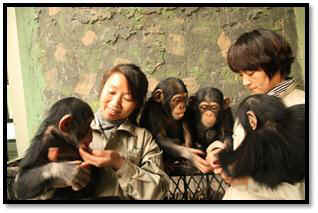 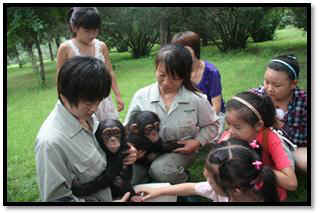
Suggestions: It would be beneficial for these young animals if
they were introduced to an adult pair of chimpanzees and
grow up with surrogate parents.
They should not be taken outside of their cages to socialize with
the visitors either. Besides the possible transmission of
diseases, it is also perpetuating an inappropriate message
that chimpanzees can be kept as pets. Chimpanzees are wild
animals that can severely harm humans. Each time keepers and
visitors have direct contact with them, the interaction can
trigger an attack. Please review pictures below of
chimpanzees harming humans.
 
http://www.thaindian.com/images/Charla-Nash-Before-After.jpg
http://ww2.hdnux.com/photos/05/51/00/1478717/3/628x471.jpg

http://assets.nydailynews.com/polopoly_fs/1.391003!/img/httpImage/image.jpg_gen/derivatives/article_970/alg-st-james-davis-jpg.jpg
The
following PowerPoint presentations were given:
LET
THEM BE ELEPHANTS –
Describes how the Phoenix Zoos’ behavioral enrichment
program improved our care for elephants. It also addresses
proper foot care.
THE
LACK OF SUBSTRATE USE IN ZOOS – Addresses the easy way to fix the
issue of empty cages while improving the animals’ lives by
eliminating empty concrete spaces. This is probably the most
important animal welfare presentation.
I
would like to thank the Jinan Zoo’s directors and staff,
as well as the Chinese Association of Zoological Gardens, for
inviting me back and continuing to improve their animals’
welfare.
I
would also like to thank Animals Asia Foundation for funding
and organizing this trip and establishing such a wonderful,
working relationship between the Jane Goodall Institute, the
Phoenix Zoo and the Jinan Zoo.
|





























